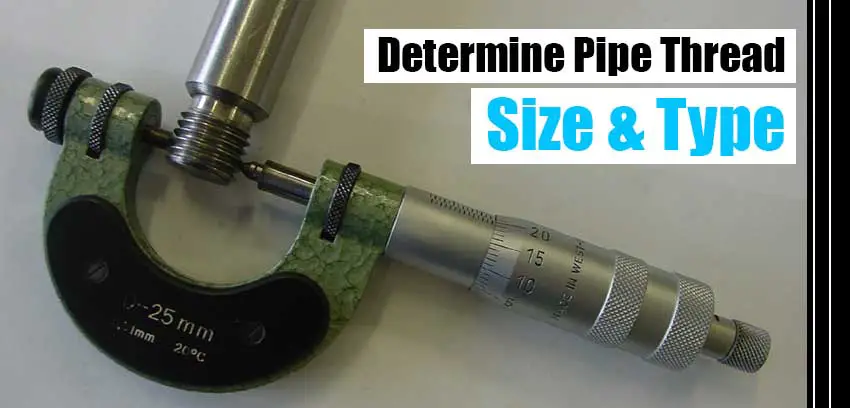When working with pipe joints, it’s important you first identity the thread sizes and their types as well. It will help you finish up the joints appropriately. Consequently, you can apply the thread sealant in the right manner.
Following this article, even a novice can simply tell that. It’s not a very big deal, just a couple of things you’d have to check. And for that, you might require a few tools like a pitch gauge, ruler, etc. After that, you just do some tiny technical calculations.
But don’t worry; it’s a complete ACTIONABLE GUIDE to make you learn how to identify pipe thread size and type.
More Resources: Best Threadlocker
How to Identify Pipe Thread Size and Type
So, what is pipe thread basically? Well first on a pipe end, you will see a spiral design that has peak and valley. It could be either a male or, a female thread. The dimension is related to the number of threads positioned per inch. And so it consists based on the peak and valley of itself.
Hence the peak is referred to as the crest, and the valley is referred to as the root.

And the distance between the two immediate peaks is called the pitch. From the above picture, you can see that there’s an angle lies between two crests. Note that for tapered threads, the diameter size will vary from one end to another. From the endpoint, it gradually increases towards the upper side. Ok… that’s enough of the basics for this moment. Now, let’s explore the steps of determining their diameter and sizes.
Determine Pipe Thread Size
1. Determine the Pitch Size:
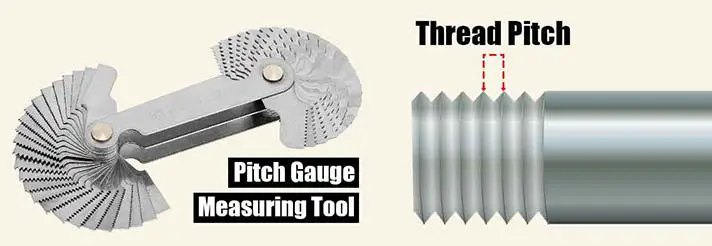
You have to calculate the number of threads per inch. That’ll help you find out the pitch size. You can calculate that by using a ruler, but we recommend using a pitch gauge. And that’ll give you accuracy in the result.
So, don’t forget to make use of it, if you have one at your disposal. And you’ll love to see how accurate the measurement is!
2. Identify the Thread Diameter:
To determine it, you might use a caliper that’s highly recommended. You’d have to measure the outer diameter of a male vs. inner diameter of a female thread. Note the reading of the caliper. There could be 3 types of diameter values for a male thread:
- Minor Diameter
- Pitch Diameter
- Major Diameter
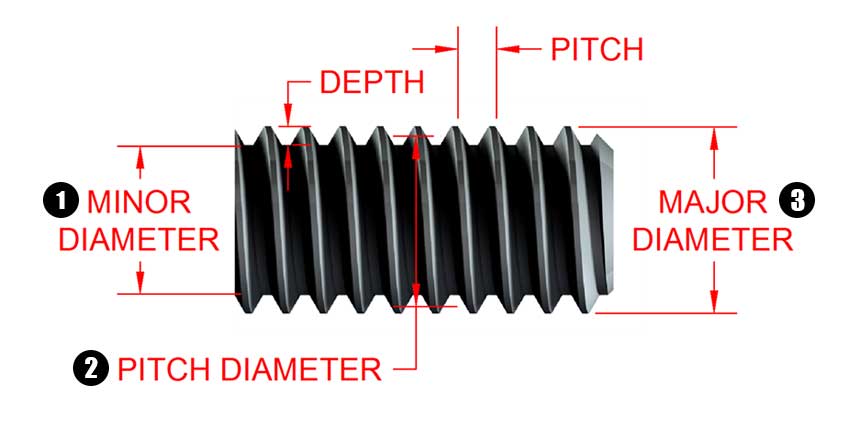
Try to compare it with the specification table (if available).
REMEMBER, if you don’t have a specification and try to compare it with a generalized table, you might observe small variations. The variation occurs due to the production pattern of different manufacturers.
Identify Standard Thread Types: (NPT, PT, BSP-Trimantec)
The different thread types are produced by complying with some rules and guidelines. NPT, PT, BSP, and metric are different standard types. Now, let’s get to know more about each type in a broad sense:
1. NPT thread type:
It’s commonly referred to as National Pipe Taper. NPT is initially designed for water piping applications. NPT correctly handles low-pressure situations. This standard type is widely used in North America. Hence, the thread angle between the pitches is 60 degrees. And that’s both for external and internal angles.
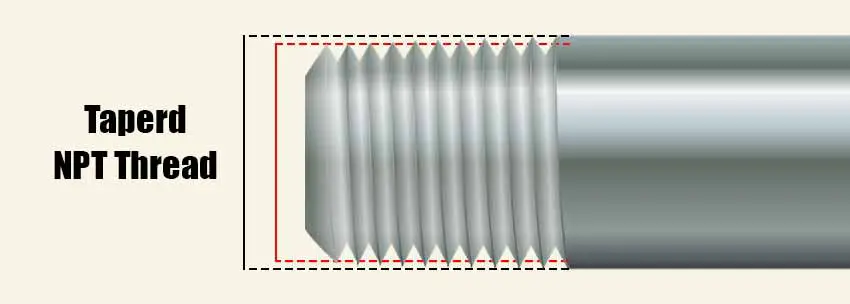
From the name, you have already understood that it’s a tapered thread. NPT has a tapered outer portion and self-sealing inner diameter. If you torqued it, its flanks would compress against each other. This compression will develop a leak-proof seal.
However, the use of PTFE tape or any sealant compound is always recommendable to ensure a total leak-proof seal. Both of them will work better if you can apply them correctly.
2. BSP Thread type:
BSP is another standard type that’s spelled as BRITISH STANDARD PIPE. It has been used internationally for sealing and joining pipe ends. European countries use BSP standard type. For this type, both the internal and external thread angles are 55 degrees. So the pitches are a bit closer than in the NPT.
BSP is further categorized into two other types: BSPP and BSPT. BSPP has a parallel to straight pipe end structure. BSPT, on the other hand, features a tapered structure. Have you ever heard of G and R pipe end structure types?
We guess you probably had!
BSPP has an alias of G threads, and BSPT is often referred to as R.
3. PT Thread Type:
It is commonly called a JIS tapered pipe thread type. PT is very similar to the BSPT or R. Interestingly, they are interchangeable and compatible.
PT male pipe end doesn’t have a 30⁰ flare.
That’s why it will not be compatible with BSPP female fittings. But you can always create a leak-proof seal using PTFE tape or any sealant compounds at your disposal.
4. Metric tapered Parallel Thread type:
This standard type is most prevalent in Europe. You’ll see it has a cylindrical inner surface. Best force transmission is the flagship feature of metric tapered thread. You will find a mark on this type that says M22 × 1.5.
Hence, the letter “M” stands for Metric type thread and 1.5 indicates the outside diameter. It is highly recommended to use a metric pitch gauge to measure the pitch size.
5. Male & Female Pipe Threads:
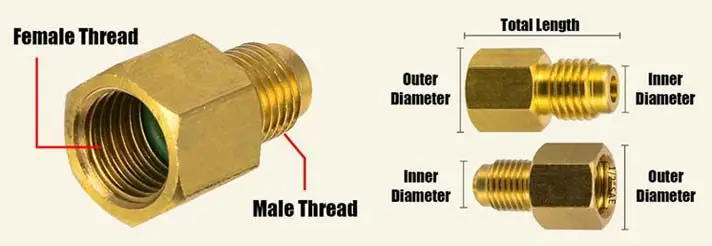
It is imperative to identify the major types, is it male or female? Observe the location; if it is outside of the fittings, then it’s a male. Alternatively, if it’s located into the inner side of the fittings, that’s a female thread.
6. Tapered vs. Parallel Pipe Thread:
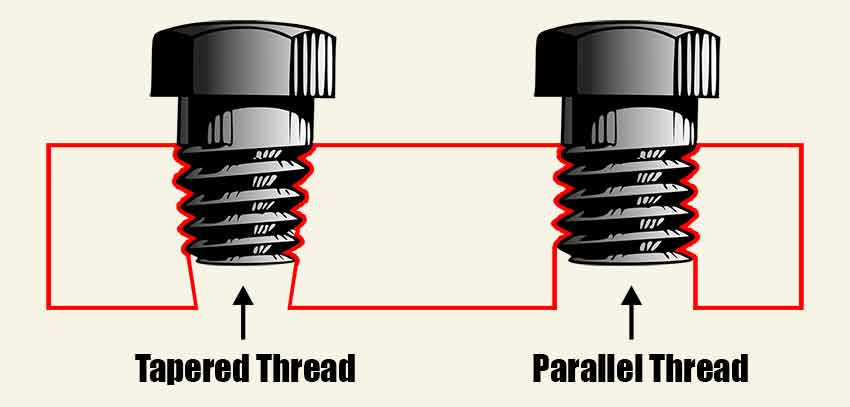
To determine tapered or parallel types, we need to observe their shapes closely. For a tapered pipe end, the seal is done through metal to metal wedging. As for parallel, the seal is made by using an O ring or bounded washer. The second technique is observing the outward extension. If the outward extension narrows down, then you can call it tapered threads. On the contrary, a constant outward extension can be defined as a parallel or, straight type.
Conclusion
What we know is a drop and what we don’t know is an ocean. That’s very true while discussing the size and types of pipe end structure. There are many types around. In this article, we have tried to focus on the most essential and popular thread types.
And hopefully, you’ll benefit if you’re in search of the exact information.
This reading will help you to understand the functionality. And help you determine pipe thread size and types very easily.
Frequently Asked Questions
1. Can I measure a fitting pipe using a measuring tape?
Answer: Tape measurement is not accurate. You have to measure it with a clipper. Depending on the type of thread measurement chart has been designed.
2. Is BSPP or G threads are compatible with NPT?
Answer: Typically, they are not compatible. For the NPT, the connection angle is 60⁰, and the G has a connection angle of 55⁰. NPT’s are minutely tapered, and G threads are straight.
3. Do NPT threads require sealant?
Answer: Yes, NPT’s are designed in such a way that it will adopt sealant quickly. Usually, Teflon tapes are used as a sealant. The use of sealant will provide you leak-free joining.
4. What is a strong thread?
Answer: Probably…Nylon is the strongest one that’s synthetic in nature. It’s mostly used nowadays and famous for its stretch quality. Besides, it does provide you flexibility and for that, is mostly used in home renovations.
5. What does 16 UNC mean?
Answer: It’s the USA standard for coarse pipe end structure. For instance, coarse here means to have 16 threads per inch of an original shank length of 3/8”.
Note – All our comprehensive tutorials are in-depth internet research based where we try to help you sort out the difficulties. We certainly acknowledge the validity and authenticity of the information. Subject matter experts are highly welcome for their valuable suggestions.
